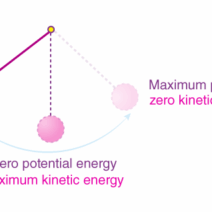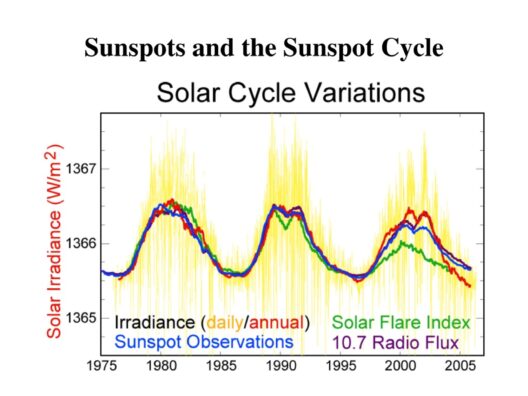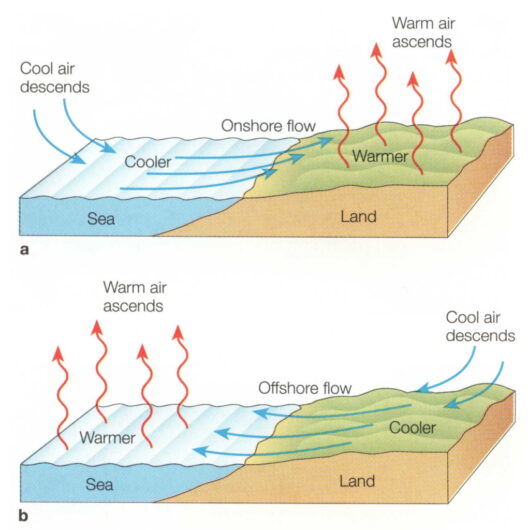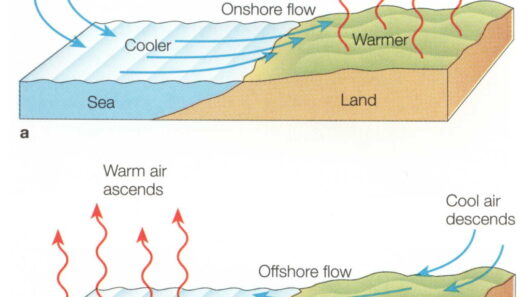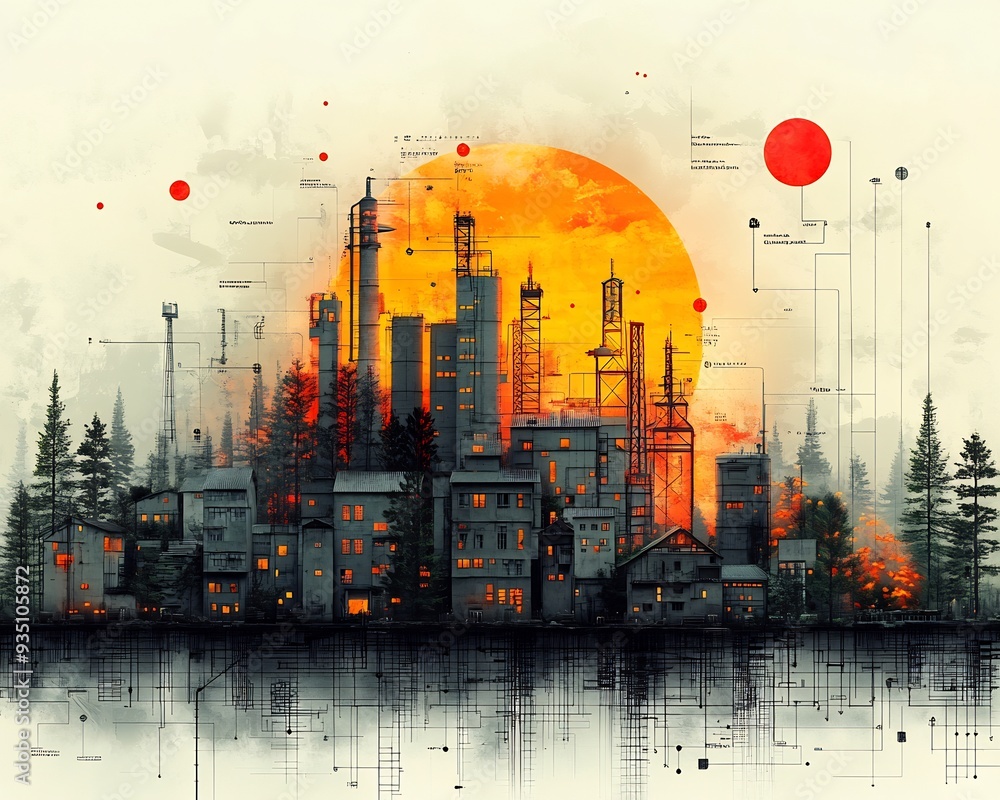
stock.adobe.com
The Industrial Revolution, a monumental turning point in human history encompassing the late 18th to the early 19th centuries, dramatically altered societal norms, economic structures, and technological advancement. However, beneath the veneer of progress, a sinister byproduct began to emerge: global climate change. This transformation poses a playful question: Did the quest for innovation inadvertently brew a perilous storm for the planet? Furthermore, as we delve deeper into this subject, one might contemplate a challenge: how do we reconcile the advancements of industry with the urgent need for environmental stewardship?
To appreciate the magnitude of this challenge, it’s pivotal to understand the elements that catalyzed the Industrial Revolution. The birth of industries coincided with the exploitation of fossil fuels as a critical energy source. Coal, one of the primary fuels of the time, burned with remarkable efficiency, providing an unprecedented energy backbone for locomotives, factories, and steamships. The insatiable appetite for coal rapidly escalated carbon dioxide (CO2) emissions, thus initiating an unsettling trend toward increased greenhouse gases in the atmosphere.
Prior to the onset of the Industrial Revolution, the natural carbon cycle maintained equilibrium. However, the sheer volume of carbon extracted from deep within the Earth began to tip this delicate balance. It is estimated that before these industrial activities commenced, atmospheric CO2 levels oscillated around 280 parts per million (ppm). Fast forward to today, and those levels have surged to well over 400 ppm. This dizzying ascent begs inquiry: How can technological advancements that once promised enlightenment now serve as harbingers of environmental degradation?
Alongside coal’s dominance, the proliferation of iron and steel manufacturing established an age characterized by remarkable economic expansion but also environmental neglect. Smelting processes released not only CO2 but also sulfur dioxide and particulate matter, contributing to widespread air pollution. Cities rapidly embraced this burgeoning industry, reveling in the newfound conveniences it provided—little did they realize that they were laying the groundwork for future climates to spiral into chaos.
The agricultural landscape also underwent a radical transformation during this period. It was marked by the agricultural revolution, which introduced mechanization, leading to increased crop yields. Yet, this productivity came at a dire environmental cost. Monoculture farming, the act of cultivating the same crop year after year, depleted soil nutrients and diminished biodiversity. It’s paradoxical; to achieve efficiency in feeding growing populations, the ecological systems that sustain them were compromised. The implications of this shift contributed to the atmosphere’s precarious state, creating conditions for climate instability.
It is essential to draw a connection between this historical context and the contemporary implications of climate change. The world stands today at a pivotal crossroads, grappling with the ramifications of carbon emissions produced by over two centuries of industrial activity. Weather patterns have become erratic, with severe storms, droughts, and rising sea levels presenting tangible threats to lives and livelihoods. Are we, as global citizens, equipped to confront this legacy? What’s more, do we possess the ethical responsibility to face the repercussions of timeworn decisions?
Scrutinizing the evolution of public awareness concerning climate change reveals a fascinating trajectory. Initially thought to be an abstract concern, the concept of anthropogenic climate change gradually materialized into a focal point for activists and scientists alike. The scientific community has provided resounding evidence linking the unprecedented rise in global temperatures to the combustion of fossil fuels initiated during the Industrial Revolution. Yet, societal inertia persists. The challenge lies in galvanizing global stakeholders to act decisively without question.
Efforts to address climate change are often encumbered by political, social, and economic barriers. For instance, fossil fuel dependency remains entrenched in many economies, particularly those that have yet to diversify their energy portfolios. Thus, the juxtaposition of immediate economic interests against long-term environmental sustainability creates a paradox. Why should a nation shift toward renewable energy sources when the short-term benefits of fossil fuels yield significant financial returns? This is the conundrum that must be navigated if progress is to be made.
Moreover, the international community’s responsibility to provide equitable solutions takes center stage. Climate change disproportionately affects vulnerable populations in developing nations who bear the brunt of natural disasters and environmental degradation. These countries, often the least responsible for carbon emissions, face dire consequences. In this light, the Industrial Revolution’s inheritance reveals a stark reality; the affluent must extend their resources to aid those most afflicted by the climate crisis.
Confronting the legacy of the Industrial Revolution compels us to reimagine our relationship with the environment. Innovation must no longer be synonymous with exploitation; rather, it should herald a new paradigm that prioritizes ecological balance. Technologies such as carbon capture and storage, renewable energy systems, and sustainable agricultural practices stand as testaments to what the future might hold. The potential to innovate exists, but it requires a collective willingness to embrace the change that is sorely needed.
In summary, as we scrutinize the interactions between industrial advancement and global climate change, it is crucial to accept an urgent challenge: how can societies reconcile their industrialized pasts with a sustainable future? The answers are multifaceted and demand a concerted effort from all corners of the globe. In realizing the tangible effects of a climate system deeply influenced by industrial practices, we must guide our institutions and communities toward a future where innovation and environmental stewardship coexist harmoniously.


